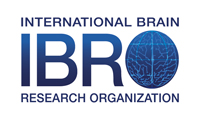
Photo from archive.org
Since the discovery of cognitive maps in rodent hippocampus (HC), the cognitive map has been developed from being originally intended as spatial representations encoding locations and objects in Euclidean spaces… Click to show full abstract
Since the discovery of cognitive maps in rodent hippocampus (HC), the cognitive map has been developed from being originally intended as spatial representations encoding locations and objects in Euclidean spaces to a general low-dimensional organization of information along selected feature dimensions. A cognitive map includes hypothetical constructs that bridge between environmental stimuli and the final overt behavior. To neuroeconomists, utility and utility functions are such hypothetical constructs with neurobiological basis that drive choice behavior. Emergence of distinct functional neuron groups in the primate orbitofrontal cortex (OFC) during simple economic choice indicates the formation of an abstract cognitive map for organizing information of goods for value computation. Experimental evidence suggests that organization of neuronal activity in such cognitive map reflects the abstraction of core task features. Thus, such map can be adapted to accommodate economic choices under various task contexts.
Journal Title: Neuroscience
Year Published: 2021
Link to full text (if available)
Share on Social Media: Sign Up to like & get
recommendations!